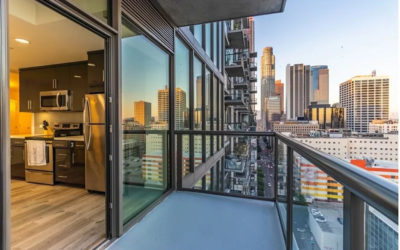Shiny and New OR Bringing a Community Back to Life? Where Do You Invest in the Real Estate Spectrum?
Many of us are familiar with the one of the most basic rules of finance. The higher risk, the greater return an opportunity should command. This is called the “risk-return” profile consideration for investments and asset classes. Let’s explore some common profiles including Core, Value-Add, Opportunistic strategies.
Different industries categorize and indicate the risk-return profiles with their own nomenclatures. For example:
· In the bond market you have the credit ratings (AAA vs junk bonds)
· In stocks you have blue chippers (IBM) vs penny stocks (lesser known and not as stable)
In each of these, the names tell us that the more stable the asset, the less relative risk it has to its peers and therefore investors should also expect a lower relative return for its comparable safety to its peers.
In real estate we categorize investment opportunities into similar buckets which indicate to our community the risk return profile the asset holds for investors. Those buckets are:
· Core
· Core Plus
· Value Add
· Opportunistic

Let’s break these down a bit further:
CORE buildings will be at the top of the food chain. These assets will be in prime locations such as a downtown center in a major market city, they will be well maintained, highly desirable, have a strong tenant base, and will be strong cash flowing from Day 1. The relative risk is lowest.

VALUE ADD buildings often are already profitable but are under performing relative to its peers in the neighborhood. These buildings are typically a bit of an older product and are located in areas already experiencing growth, but not in the direct city center location. These assets often can realize an increase in value by improving the current condition, desirability, and/or tenant base.

While OPPORTUNISTIC or DISTRESSED buildings will be the riskiest type of buildings. These assets will often already have very high vacancy rates or be completely vacant. They could be in less desirable neighborhoods, in need of significant updates or repairs. Development and redevelopment projects fall into this category as well because they start with no cash flow (or in some cases negative cash flow) and bare the risk of execution to become profitable.

To determine which bucket an asset will fall into there are several considerations such as:
- Location
- Age
- Cash Flow
- Vacancy Rates
- Tenant Profiles
- Desirability
- Amenities
- Needs for updates, maintenance

Investors should always be aware of which bucket they are investing in and align their investment goals with the appropriate risk return profiles. The value add and opportunistic buckets allow for a higher potential velocity of money (i.e. how long it takes to multiple) due to the higher returns and shorter hold periods. Of course the trade-off is that you take on a higher risk of capital and a much more active management approach is required to execute a plan. Core and core plus assets allow for a longer term hold with steadier cash flows. Neither one is right or wrong, just depends on your goals and stage of your financial life.
To learn more about investing in Multifamily, please contact us anytime.
Part of the Multifamily Scrum Series – Written by Matt Aquino




